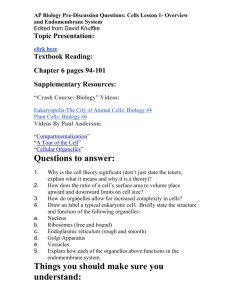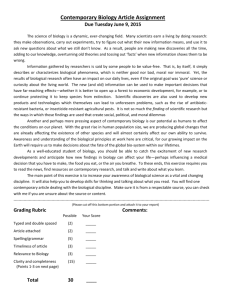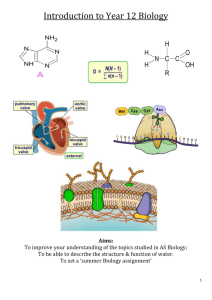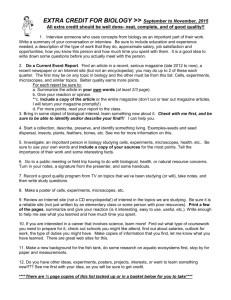Collaboration Options
advertisement
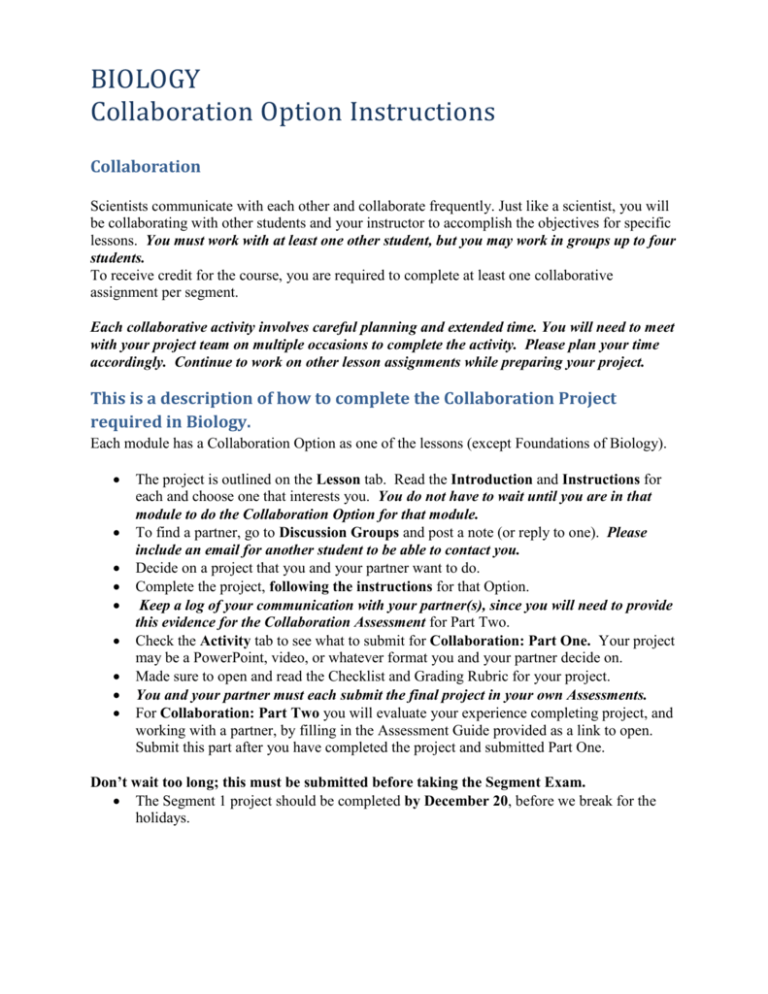
BIOLOGY Collaboration Option Instructions Collaboration Scientists communicate with each other and collaborate frequently. Just like a scientist, you will be collaborating with other students and your instructor to accomplish the objectives for specific lessons. You must work with at least one other student, but you may work in groups up to four students. To receive credit for the course, you are required to complete at least one collaborative assignment per segment. Each collaborative activity involves careful planning and extended time. You will need to meet with your project team on multiple occasions to complete the activity. Please plan your time accordingly. Continue to work on other lesson assignments while preparing your project. This is a description of how to complete the Collaboration Project required in Biology. Each module has a Collaboration Option as one of the lessons (except Foundations of Biology). The project is outlined on the Lesson tab. Read the Introduction and Instructions for each and choose one that interests you. You do not have to wait until you are in that module to do the Collaboration Option for that module. To find a partner, go to Discussion Groups and post a note (or reply to one). Please include an email for another student to be able to contact you. Decide on a project that you and your partner want to do. Complete the project, following the instructions for that Option. Keep a log of your communication with your partner(s), since you will need to provide this evidence for the Collaboration Assessment for Part Two. Check the Activity tab to see what to submit for Collaboration: Part One. Your project may be a PowerPoint, video, or whatever format you and your partner decide on. Made sure to open and read the Checklist and Grading Rubric for your project. You and your partner must each submit the final project in your own Assessments. For Collaboration: Part Two you will evaluate your experience completing project, and working with a partner, by filling in the Assessment Guide provided as a link to open. Submit this part after you have completed the project and submitted Part One. Don’t wait too long; this must be submitted before taking the Segment Exam. The Segment 1 project should be completed by December 20, before we break for the holidays. Summary of Collaboration Project Options for Biology Segment 1 02.07 Life’s Origin Your group’s task is to compare a plant or animal cell and its organelles to an everyday object or situation. Your analogy should be unique, creative, and detailed, demonstrating your understanding of the structure and function of organelles as well as the interactions between them. You will work together as a team to create a project that gives a detailed explanation of your analogy and/or model. 03.09 Cell Reproduction For this collaborative project, you and your partners are screenwriters looking for ideas for a new show. As a group, you haven’t decided which type of show you would like to create yet. You only know the network (that’s your instructor) wants an introduction and a three-page script telling a story that’s science-based, one dealing with biotechnology, forensics, health, or cellular biology. 04.06 Earth’s Diversity The new TV show Living Green is having a contest on energy efficient homes. With a budget of $100,000, contestants must turn their traditional homes into eco-friendly homes. To become a contestant, you and your partner must submit a presentation that creates the most “green” house within the given budget. Segment 2 05.04 Scientific Connections For this collaborative project you will work with at least one partner, each taking on the role of writers for a science magazine. The topic for the magazine's next edition is natural selection, and you will each research and write an article on this topic. Then, the group will work together to edit the articles and prepare the magazine layout. 06.09 Classification and Diversity For this project, you and your partner will design a zoo, wildlife preserve, or botanical garden that includes specialized habitats for eight different species from any of the five kingdoms. The zoo, preserve, or garden should meet the needs of all of your species and should help increase the populations of any endangered species you choose to place in your park. The design plan must describe the habitat needs, food requirements, and include special instructions for encouraging reproduction among your animals. You can assume you have unlimited resources and funds to care for your park and its inhabitants, so you can let your imagination go wild! However, make sure you have created an environment to reach your ultimate goal, which is preventing the extinction of endangered species. 07.07 Human Systems Your group's task is to investigate a disease or syndrome that affects multiple systems in the human body. You will create an informative brochure, presentation, or video that can be used to inform others about the serious effects of the disease.


